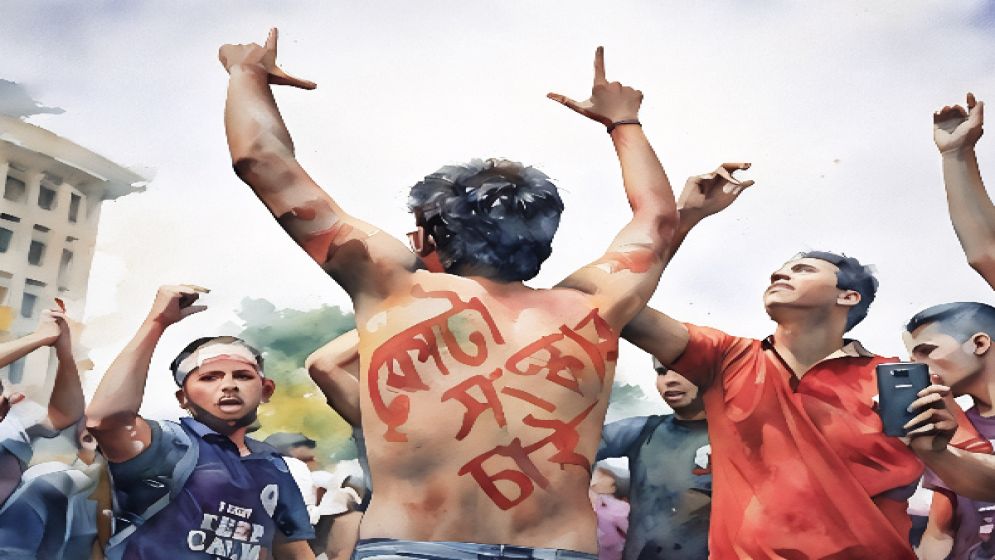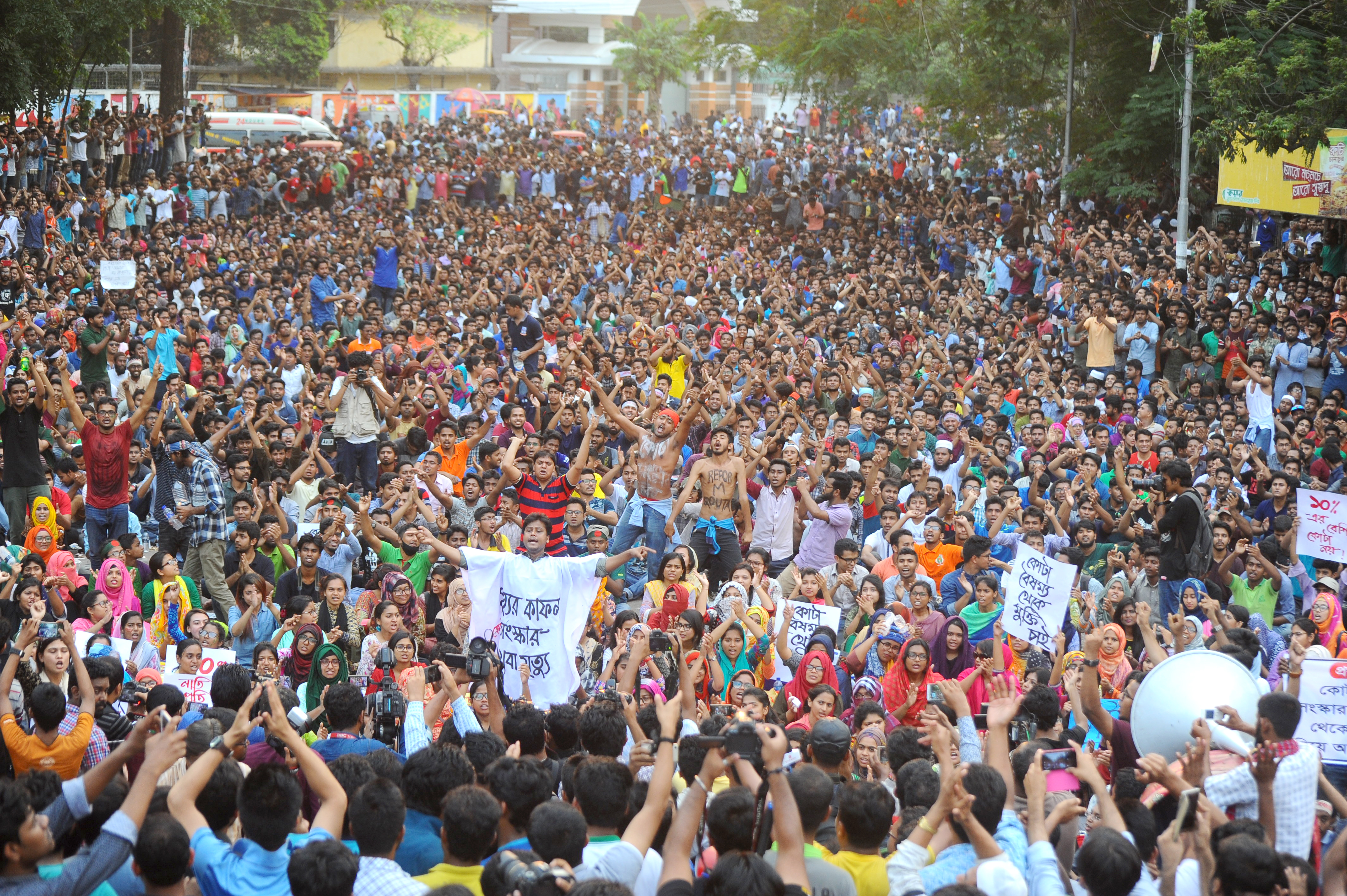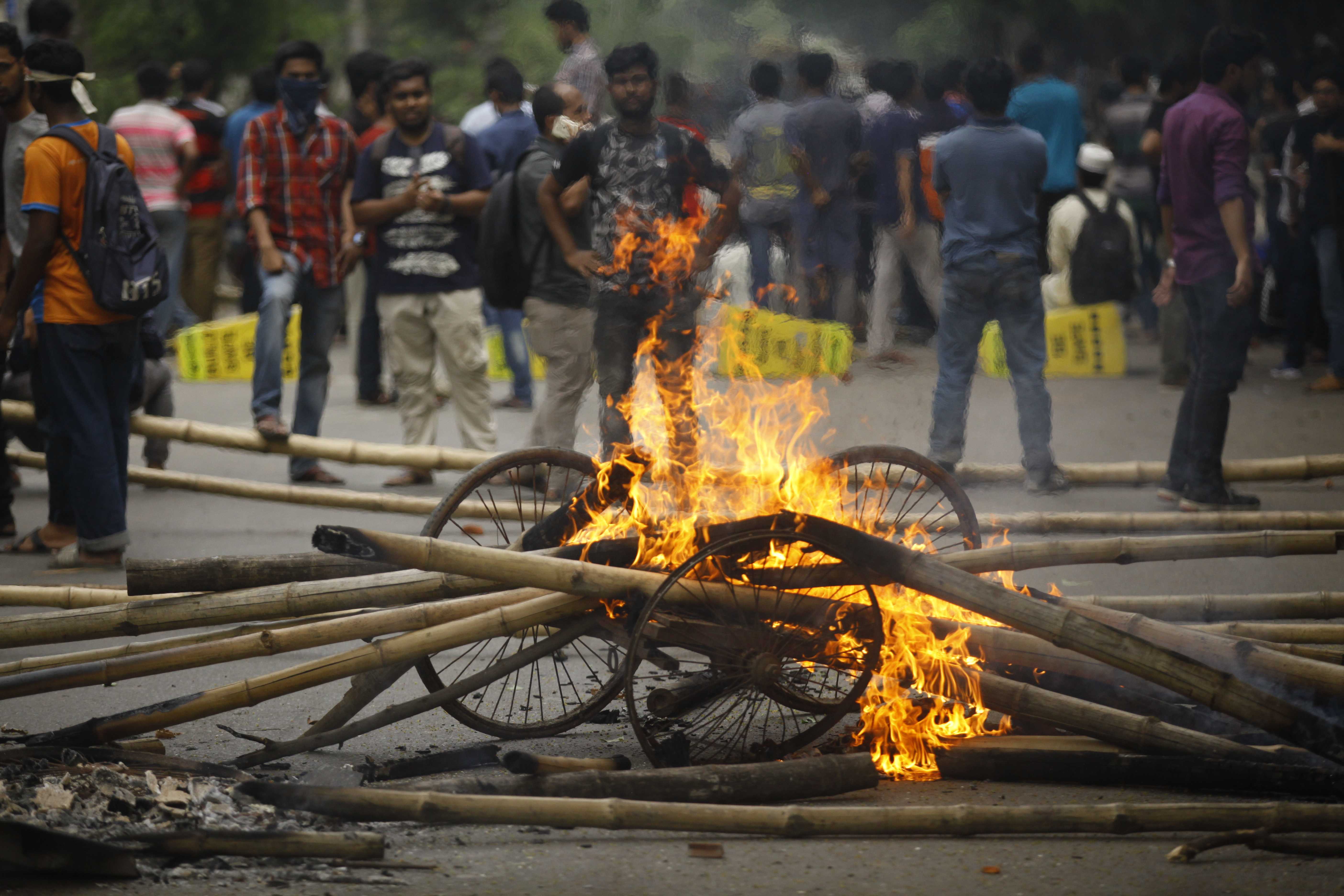Did the abrupt removal of quotas six years ago reignite the quota reform movement?

University campuses are once again witnessing protests against the recent High Court decision to reinstate quotas in government jobs.
The reinstatement has dashed the hopes of many young job seekers who had been optimistic about their improved chances in a quota-free system. This setback seemingly reverses the gains made during the 2018 Quota Reform Movement.
In 2018, a widespread student movement led the Ministry of Public Administration to abolish quotas for first and second-class government jobs.
Recruitment proceeded without quotas for several years, until a recent High Court ruling declared the abolition illegal and ordered their reinstatement. As a result, protesters have issued an ultimatum demanding a resolution by June 30 which ended yesterday.
Justice M Enayetur Rahim, presiding in chambers at the Appellate Division, has scheduled July 4 for the hearing of a government appeal filed by Attorney General AM Amin Uddin against the verdict.
Until then, the reinstatement of quotas remains in effect. During the appeal, the Attorney General asserted that the decision to abolish quotas was a policy matter within the government's purview, and thus the High Court should not have intervened.

Why did the 2018 movement take place?
Quotas are systems designed to ensure representation and inclusion of various groups. In Bangladesh, quotas were implemented to promote participation of all communities in education and development.
Bangabandhu Sheikh Mujibur Rahman initially established quotas for freedom fighters in 1972, but this system was discontinued three years later following his assassination. It wasn't until 1996 that Prime Minister Sheikh Hasina, his daughter, reinstated quotas for freedom fighters.
The existing quota system in Bangladesh sets aside 56% of government jobs for specific groups, including 30% for descendants of freedom fighters, 10% for district quotas, 10% for women, and 5% for ethnic minorities.
Additionally, 1% is reserved for physically challenged individuals if the other quotas are not met. So, it essentially means that before the 2018 quota reform movement, those quotas collectively accounted for 56% of available public service vacancies.
That system has been criticized for a long time for excluding qualified candidates who do not belong to these groups. Additionally, if candidates from the designated groups fail the recruitment tests, the positions often remain unfilled.
Prime Minister Sheikh Hasina responded to the quota reform movement by announcing the complete removal of quota privileges in public service recruitment, a move perceived as an attempt to quickly pacify the protests and maintain order.
This decision was officially implemented through a gazette notification in October 2018. It's worth noting that not all protesters at the time were advocating for a complete elimination of quotas. Some sought a reduction in the number of quotas allocated in government services.
Many experts considered the outright abolition of quotas to be a hasty solution that failed to address the historical injustices and socio-economic disparities the system was intended to alleviate.
This decision left ethnic minorities, women, and descendants of freedom fighters feeling marginalized and betrayed, contributing to the recent High Court ruling.

How did the recent HC decision come about?
In court, the dependents of freedom fighters argued that the government's abolition of their quota violated a 2012 High Court verdict, which mandated a 30% quota for their descendants in every appointment. This verdict was later upheld by the Appellate Division.
The High Court's decision to reinstate the quota system triggered renewed protests among students and job seekers who had actively opposed it in 2018.
Demonstrations flared up across Dhaka University and other educational institutions, with students calling for the cancellation of the reinstated quotas.
Rifat Rashid, a recent student protest organizer, stated, "We are not advocating for the abolition or reform of the quota system. We simply want the 2018 gazette, which abolished quotas, to be reinstated."
He questioned the court's decision to nullify the 2018 gazette without consulting all relevant stakeholders. "We, the people and the student community of Bangladesh, believe that the decision goes against the interests of the people," he added.
Rashid also emphasized that the government holds the authority over decision-making regarding the quota system and the High Court should not intervene in such matters.
Anupam Debashish Roy, author of the book “Not all springs end winter”--which critically examines the 2018 quota reform movement told Bangla Outlook that the resurgence of the quota movement in 2024 could be attributed to the government's failure.
“The government failed to conduct thorough policy analysis and stakeholder consultations before hastily abolishing the quota system in 2018,” he said.
“The decision seemingly prioritized immediate pacification of protests over long-term stability and justice, " he added.
Giving reference to "The Rebirth of History," by Alain Badiou which defines historical protests as mass uprisings that signify a return to active political engagement, Anupam said, the quota reform movement exemplified this concept in the 2010s, mobilizing university students concerned about their future job prospects in Bangladesh.
“Initially a rent-seeking endeavor, it transformed into a larger uprising, with leaders asserting their political influence later on,” said Anupam
He pointed out that despite facing setbacks, the quota reform movement's leaders achieved political success with two members elected to the Dhaka University Central Students' Union in 2019.
They subsequently formed their own political party, the Gono Odhikar Parishad (GOP), but internal conflicts and scandals have plagued the party. “This renewed opportunity to revive their original movement could be a chance to resolve internal issues, unite the party, and reignite the momentum they had in 2018,” Anupam said.
—-

